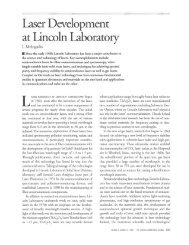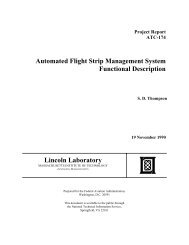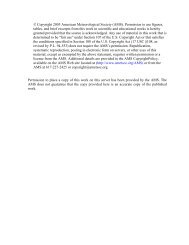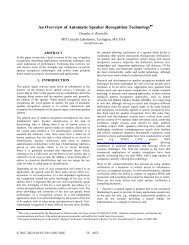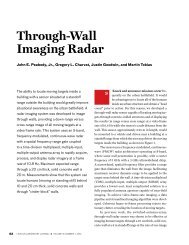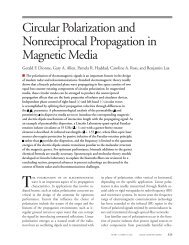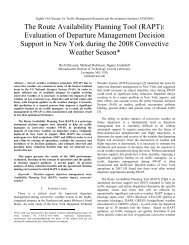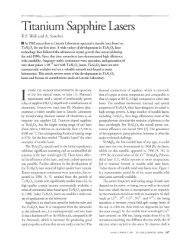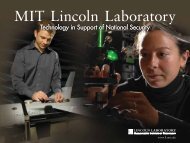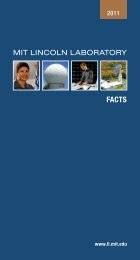2011 Annual Report - MIT Lincoln Laboratory
2011 Annual Report - MIT Lincoln Laboratory
2011 Annual Report - MIT Lincoln Laboratory
You also want an ePaper? Increase the reach of your titles
YUMPU automatically turns print PDFs into web optimized ePapers that Google loves.
■ The Haystack Ultrawideband Satellite<br />
Imaging Radar (HUSIR) will enable<br />
imaging of satellites in low Earth orbits<br />
with much higher resolution than<br />
currently possible. In <strong>2011</strong>, the installa<br />
tion and initial alignment of the new<br />
antenna surface was completed. HUSIR<br />
will begin W-band satellite imaging<br />
operations in 2013 after integration and<br />
testing of the X- and W-band transmitters<br />
and receiver electronics.<br />
LEADERSHIP<br />
FUTURE OUTLOOK<br />
Dr. Grant H. Stokes Mr. Lawrence M. Candell Mr. Craig E. Perini<br />
Shown is the completed<br />
antenna surface of the<br />
Haystack Ultrawideband<br />
Satellite Imaging Radar.<br />
■ New sensor systems are bringing expanded capabilities to the Space Control mission<br />
area. These systems include the Space-Based Space Surveillance–Block 10, the Space<br />
Surveillance Telescope, HUSIR, and the Space Fence. Considerable effort will be<br />
required to fully assess the information available from the new sensors and make it most<br />
useful to operators.<br />
■ Major activities will move toward information extraction, integration, and decision<br />
support. The challenge will be to incorporate the widest possible set of data and<br />
automate the process of generating customized, actionable products for a wide<br />
range of users. In particular, developing and demonstrating a net-centric architecture<br />
for information integration and command and control will be critical for evolving to a<br />
machine-to-machine–driven space situational awareness capability that can respond on<br />
timelines required to support survivability efforts.<br />
■ Emerging technical areas include advanced radar development, radar surveillance,<br />
space-object identification, electro-optical deep-space surveillance, collaborative<br />
sensing and identification, fusion, and processing.<br />
<strong>MIT</strong> <strong>Lincoln</strong> <strong>Laboratory</strong> 27



